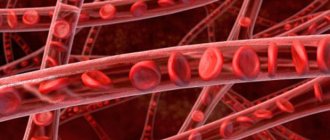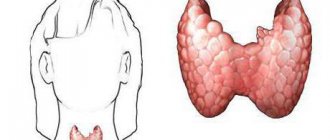What is toxic shock syndrome?
Toxic shock syndrome (TSS) is a rare, life-threatening bacterial infection. The syndrome occurs when the bacteria responsible—Staphylococcus aureus and Streptococcus pyogenes, which normally live harmlessly on the skin—enter the body's bloodstream and release toxic toxins.
These toxins cause a significant decrease in blood pressure (shock), leading to dizziness and confusion. They also damage tissue, including skin and organs, and can interfere with many vital organ functions. If toxic shock syndrome is not treated, the combination of shock and organ damage can lead to death.
How common is TSS?
Anyone can experience toxic shock syndrome—men, women, and children. For reasons still unclear, a significant proportion of cases occur in menstruating women who use tampons, especially tampons designed to be “super absorbent.”
TSS can also occur as a result of an infected abscess, insect bite, or wound, for example. Some cases involve damage to the skin from a burn, which allows bacteria to enter the body and release toxins.
The risk of toxic shock syndrome is higher in younger people. This is thought to be because many adults and older people have developed immunity (resistance) to the toxins produced by the bacteria.
TSS is an extremely rare condition, with approximately 3-5 in 100,000 people developing the syndrome each year. Two or three of them will die.
If toxic shock syndrome is diagnosed and treated early with antibiotics, there is a good chance of recovery.
Toxic shock syndrome: how to avoid becoming a victim of tampons
“The use of tampons has been linked to the rare but dangerous disease Toxic Shock Syndrome (TSS),” reads the label on the tampon packaging.
Let's be honest, we don't always bother to read the package insert from start to finish. What is toxic shock syndrome?
Toxic shock syndrome (TSS) is a serious life-threatening condition. It is characterized by the appearance of fever, a rash similar to sunburn, muscle pain, a drop in blood pressure and, at the same time, disruption of the functioning of many organs [1].
Why does TSS occur?
The cause of this disease is the bacterium Staphylococcus aureus. It lives on the skin, nose or mouth of a person without any risk to health, but can cause harm if it enters the blood and releases a special substance - the TSST-1 toxin [2,3].
Tampons and toxic shock syndrome
Gynecological tampons became a commercial success in the 1930s, when Tampax first appeared in American pharmacies. The cotton swab, packaged in a telescopic applicator, made it possible to avoid direct touching the genitals, and therefore was immediately liked by clean customers. In 1978, the giant Procter & Gamble began selling Rely ultra-absorbent tampons. What made them special was their “revolutionary” composition: instead of cotton and viscose, tampons were made from a completely synthetic, moisture-loving material flavored with a hyperabsorbent - a food thickener called cellulose gum. This is how the era of toxic shock began. Firstly, the absorbent dried out the vaginal mucosa, and women injured its walls when removing the tampon, making it easier for bacteria to enter the circulatory system. Secondly, the food thickener disrupted the vaginal microflora, provoking the rapid proliferation of pathogenic bacteria. In May 1980, the US Centers for Disease Control and Prevention reported 55 cases of toxic shock syndrome in women. The disease develops quickly, accompanied by severe fever, decreased blood pressure, confusion, a specific skin rash resembling a sunburn, psychomotor agitation, leading to coma and death. It was soon discovered that the use of Rely tampons was linked to a number of cases of TSS, and the product was withdrawn from stores in September.
Why does toxic shock syndrome develop?
The cause of this disease is the bacterium Staphylococcus aureus. It lives on the skin, nose or mouth of a person without any risk to health, but can cause harm if it enters the blood and releases a special substance - the TSST-1 toxin [2,3].
In order for TSS to develop, several factors are needed [4]:
- the presence of Staphylococcus aureus, which secretes the toxin TSST-1, in the vagina;
- penetration of a sufficient amount of this toxin into the blood;
- lack of protective proteins (antibodies) to TSST-1.
Currently in the United States, Canada and Western Europe, 70% of women use tampons during menstruation, and TSS occurs in only 1 in 100,000 [4,5]. In a study of 3 thousand women, Staphylococcus aureus was found in only 270, while 230 had a sufficient number of protective antibodies, which means that this syndrome could theoretically occur in 40 women out of 3000. Who exactly? It is logical that a million bacteria will produce more toxin than 100, which means that the likelihood of TSS in women depends on the amount of Staphylococcus aureus. This is where tampons play a role. Bacteria, like people, need good conditions to grow and develop, and a tampon left for a long time is precisely the ideal environment.
But today, most girls and women do not want to give up tampons, because, thanks to this invention, their activity practically does not depend on the day of the menstrual cycle. The abundance of hygiene products on the market allows you to easily survive this period and at the same time continue to go to the pool, gym and, inspired by commercials, wear white trousers.
Organic Tampons: Are They Safer?
Unfortunately, organicity has no advantages here, rather the opposite. In one of the studies, they decided to determine on which tampons Staphylococcus aureus grows better and releases more toxins. To do this, they created “bags” in the laboratory with the same conditions as in the vagina, and placed different tampons and a “cocktail” of staphylococcus there.
After 8 hours, growth and the amount of TSST-1 toxin in each sample were assessed. As a result, 100% cotton tampons were found to be more favorable for bacterial growth than synthetic or blended tampons. At the same time, the absorption capacity (the familiar “droplets”) did not in any way affect the amount of staphylococcus and toxin [6].
The thing is that oxygen promotes the growth of bacteria. The space between the tampon fibers, which allow air to enter the vagina, is the “primary site” for staph growth and toxin production. Cotton tampons were looser than synthetic ones, meaning they had more space between the fibers, which explains these results [7].
Menstrual cups and toxic shock syndrome
Here the situation turned out to be even worse. Staphylococcus growth was even better in menstrual cups than on organic tampons. Moreover, the larger the bowl, the more intensively the bacteria grew and toxins were released. The reason for this is again oxygen, which is abundant in the bowl. In addition, a large amount of Staphylococcus aureus remained on the bowl even after rinsing with water 3 times [7]. Therefore, if you use menstrual cups, do not be lazy: wash them with a special solution, or even better, boil them for 5-10 minutes before using them again.
What other causes can cause TSS?
Risk factors for TSS also include recent childbirth, surgery, burns, the presence of inflamed wounds, and any foreign bodies in the body cavities (for example, a cotton swab used to stop nosebleeds) [1].
How to avoid toxic shock syndrome when using tampons and menstrual cups?
- You can find out if you have Staphylococcus aureus in your vagina by taking a smear in the laboratory. There is no need to treat it, it will still come back, you will just be more responsible about your own hygiene.
- Change hygiene products every 4-8 hours. If you do this less often, more staphylococcus will grow; if you do it more often, you can simply injure the mucous membrane.
- Give preference to tampons with mixed or synthetic composition
- If you use menstrual cups, clean them properly: wash with soap or a special solution and boil for 5-10 minutes. It is better to have a replacement bowl for the period of cleansing.
- Choose the smallest bowl size.
If you have at least one of the symptoms of TSS, consult your doctor. This disease, although very rare, is very dangerous and early treatment is more important than anything else.
Symptoms of toxic shock syndrome
Symptoms of toxic shock syndrome usually begin with a sudden high fever (body temperature rises above 38°C/100.4°F). Other symptoms then develop quickly, usually within a few hours. These may include:
- vomiting;
- a sunburn-like skin rash;
- diarrhea;
- fainting or feeling weak;
- muscle pain;
- dizziness;
- confusion.
Causes of toxic shock syndrome
Although toxic shock syndrome has been studied for over 20 years, little is known about the syndrome.
The bacteria involved in the syndrome, Staphylococcus aureus and Streptococcus pyogenes, can be found on the skin and nose in approximately 20-30% of all people. They usually do not cause serious problems.
Most people have toxin-fighting proteins known as antibodies, which can protect the body from these toxins. However, for unknown reasons, a small percentage of people do not produce these specific antibodies.
It is known that bacteria can enter the body through a wound, burn, throat or vagina. They release toxins into the bloodstream, and these toxins interfere with the processes that regulate blood pressure, causing it to drop to dangerously low levels. The bacteria also attack tissues, including skin, muscles and organs.
The kidneys are especially vulnerable to toxins because they filter waste from the blood. Kidney failure is a common complication of untreated toxic shock syndrome.
Tampons
The role of tampons remains unexplained. One theory is that if a tampon is left in the vagina for a while, as is often the case with more absorbent tampons, it can become a breeding ground for bacteria.
Another theory is that tampon fibers can scratch the vagina, allowing bacteria or toxins to enter the bloodstream.
However, no evidence was found to support either theory.
Preventive measures
Infections associated with tampons are rare. But no one is safe from them, especially if you use tampons incorrectly. So remember these tips:
- You cannot keep the tampon on for more than 8 hours. It is best to change them every 4-5 hours and use pads at night.
- If bleeding during menstruation is heavy, we recommend using pads or menstrual cups.
- It is better to choose tampons with low absorbency. After all, the more liquid tampons absorb, the higher the risk that bacteria will grow in them.
Treatment of toxic shock syndrome
There are two important goals in treating toxic shock syndrome:
- infection control;
- supportive care for any body functions that are affected.
The patient must be urgently admitted to the hospital, where he may require treatment in the intensive care unit.
Most people will respond to treatment within a couple of days, but it may take several weeks before people are well enough to leave the hospital.
Treatment of infection
The infection can usually be treated with a combination of antibiotics given directly into the bloodstream through an IV (intravenous) line.
In some cases, immunoglobulin may also be given as an antibiotic. Immunoglobulin is a sample of donated human blood that is known to contain high levels of antibodies that can be used to fight toxins produced by bacteria.
Maintenance therapy
To support breathing, the patient is given an oxygen cylinder. Fluids are given intravenously to increase blood pressure. Fluids also help prevent dehydration and organ damage.
Dialysis
If the kidneys stop functioning, a dialysis machine is used to filter the blood.
Cleaning infected tissue
If toxins have damaged parts of the skin or other extremities of the body, such as fingers or toes, the infected tissue must be drained and cleaned. In very severe cases, surgical removal of parts of the skin or amputation (i.e. surgical removal) of limbs of the body may be required.
Treatment of endotoxic shock
- High doses of antibacterial drugs are prescribed, taking into account the functional abilities of the kidneys. Antibacterial drugs used include fluoroquinolones (ciprofloxacin), amikacin, gentamicin sulfate, and cephalosporins.
- To restore the normal functioning of organs and systems and increase blood pressure, glucocorticoids (hydrocortisone, prednisolone) are used and existing electrolyte disturbances are corrected.
- Antihistamines (pipolfen, diprazine), heparin are used.
It is imperative to replenish the volume of circulating blood with the help of intravenous solutions.
A necessary condition for a successful outcome of endotoxic shock is restoration of urine outflow by catheterization of the renal pelvis along with the initiation of drug therapy. If catheterization cannot be performed, then surgically the outflow of urine is ensured by applying a nephrostomy.
Prevention of toxic shock syndrome
Preventing Infection
Prompt and thorough treatment of body wounds can help prevent infection and any risk of toxic shock syndrome.
Care when using tampons
The relationship between TSS and tampon use is unclear, but research suggests that tampon use may be a factor. For this reason, it is important that a woman:
- always used a tampon with the lowest absorbency suitable for the menstrual cycle;
- alternated tampons with a sanitary towel or pads throughout the period.
You must also:
- wash your hands before and after inserting a tampon;
- change tampons regularly - as often as indicated on the packaging;
- never insert more than one tampon at a time;
- When using one at night, insert a fresh tampon before going to bed and remove it after waking up;
- remove the tampon at the end of menstruation.
Symptoms
Toxic shock causes a sharp onset of characteristic symptoms that are characterized by suddenness. Signs of shock depend on the severity of the pathological condition and the cause contributing to the onset of shock.
Shock phases
In medical practice, toxic shock is divided into three phases:
- Compensated.
- Subcompensated.
- Decompensated.
Table No. 4. Phases of toxic shock:
| Endotoxic shock | The risk group includes urological patients over 60 years of age with concomitant diseases, such as: |
| Exotoxic shock | Occurs against the background of acute heart failure, accompanied by some severe forms of intoxication of the toxicogenic phase. Symptoms develop as a result of acute chemical influence and are characterized by disruption of metabolic function, nervous regulation and dysfunction of almost all vital organs. The causes of exotoxic shock include: |
| Bacterial toxic shock | This condition is caused by an acute reaction of the body to the sudden penetration of bacteria and toxic products into the blood. In gynecology, bacteriotoxic shock occurs after abortion and after thrombophlebitis of the hip veins. |
| Toxic shock phase | Description of symptoms |
| Compensated shock | The patient has clarity of consciousness, but at the same time there is motor restlessness, an inexplicable feeling of anxiety, rapid breathing, increased heart rate (up to 120 beats per minute). |
| Subcompensated shock | Patients become lethargic, depressed, and apathetic. The skin is pale and the extremities are cold. A decrease in body temperature to subnormal prevails. Shortness of breath, tachycardia (up to 160 beats per minute), and low blood pressure appear. Anuria, a blood clotting disorder, may develop. Gastrointestinal bleeding is possible. |
| Decompensated shock | This phase is considered the most difficult. The patient is in complete prostration, cramps in the limbs, shortness of breath, decreased blood pressure, threadlike pulse, anuria. In some cases, patients fall into a comatose state. |
Similar article - Surgery for transgender people
Signs of toxic shock
The nature of the manifestation of symptoms depends on the cause of shock and the severity of the pathological condition. Often, a state of shock leads to death within 2 days after blood intoxication.
Signs of streptococcal nonmenstrual syndrome develop:
- in women after childbirth, a few days later;
- in persons with infected postoperative wounds;
- in people with respiratory infections.
Signs of staphylococcal menstrual syndrome develop in women as a result of using tampons during the menstrual cycle. Symptoms appear after 3 days.
Symptoms of staphylococcal nonmenstrual syndrome occur within 12 hours after surgery where surgical dressings were used, such as nasal surgery.
Table No. 5. Symptoms of toxic shock:
Attention. The symptoms of toxic shock are very similar to those of a severe case of the flu. Therefore, it is very important to understand that if symptoms begin to progress, you should immediately contact a medical facility. Only a doctor can recognize the signs of toxic shock and provide qualified assistance to the patient.
Complications
Toxic shock syndrome is a life-threatening health condition. In some cases, toxic shock syndrome can affect major organs in the body. If left untreated, complications associated with this disease include:
- liver failure (liver failure);
- renal failure;
- heart failure;
- shock or decreased blood flow throughout the body.
Signs of liver failure may include:
- yellowing of the skin and eyeballs (jaundice);
- pain in the upper abdomen;
- difficulty concentrating;
- nausea;
- vomiting;
- confusion;
- drowsiness.
Signs of kidney failure may include:
- fatigue;
- weakness;
- nausea and vomiting;
- muscle cramps;
- hiccups;
- constant itching;
- chest pain;
- shortness of breath;
- high blood pressure;
- sleep problems;
- swelling in the legs and ankles;
- problems with urination.
Signs of heart failure may include:
- rapid heartbeat (tachycardia);
- chest pain;
- lack of appetite;
- inability to concentrate;
- fatigue;
- shortness of breath (shortness of breath).











